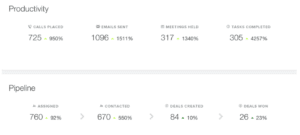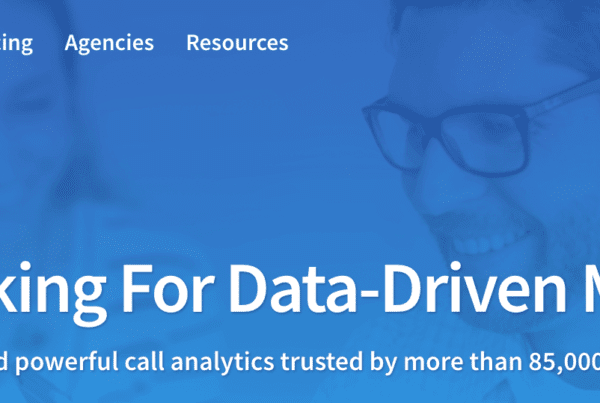Keeping tabs on key business metrics is a challenge for most executives. What’s going on out there? Are we getting the right kind of traffic, leads and sales through our marketing efforts? Is the sales team doing a good job of closing? Where can we improve?
Customer Relationship Management (CRM) software was developed to keep all of this information in one place. Originally a fancy contact database, CRM software has evolved into powerful toolsets that allow sales and marketing leaders to analyze performance in both areas–how many leads are coming in? Where are they coming from? What happens once they enter our system? What follow-up procedures are in place. What was the last contact made? Sample CRM Dashboard (source: HubSpot)
Sample CRM Dashboard (source: HubSpot)
Choosing a CRM
CRM software can provide a few of a contact’s entire relationship with a company and, increasingly, perform tasks like lead scoring and qualification based on the contact’s behavior. An example of lead scoring might be that when a contact visits a price comparison sheet, the lead moves from a Marketing Qualified Lead to a Sales Qualified Lead, and gets a personal follow up from the appropriate sales person.
Choosing a CRM can be perilous because once you choose one, changing CRMs can be difficult. Once you reach a critical mass of data stored in a CRM and have a few people that use it religiously, it will be very difficult to change.
Interim Solution
For companies considering a CRM that are not sure which one will work best for them, HubSpot (which offers a free CRM platform) has made available a Sales Pipeline Template. It’s a simple spreadsheet that allows sales and marketing to enter leads that are in the sales funnel and track the company name, contact name, deal stage, deal size, the probability of closing, weighted value, projected close date, sales rep assigned to the lead, and next steps.

HubSpot Sales Pipeline Template
While not ideal for large companies with dozens of sales reps, this simple template can work well for mid-sized companies as they ramp up their sales organizations. The reason this might be attractive as an interim solution is that it can allow you to learn what information is most important for you to measure, monitor and manage and help you select a CRM that will best meet your needs when the time comes.
Consistency is Key
CRMs are most valuable when every stakeholder on the sales, marketing, and finance teams use them consistently and the same way. Consistent use means that all information about a lead or opportunity is entered in the CRM or you will never have a view of the entire business. Using the CRM the same way for all users means that the categories and data mean the same thing to everyone–that everyone agrees what 25 percent probability means, and what the deal stages mean.
What happens when teams differ in their use of the CRM is that the data becomes unreliable. If some deals aren’t entered, you will only have a partial view of the business. If the data isn’t entered consistently and the same way, you won’t be able to analyze it to find patterns where you can improve performance.
As a company grows the CRM becomes one of two things. If it is used consistently and the same by all team members, it can become the heart of the marketing and sales automation process, where all marketing activities are launched, recorded, and measured, and where all responses can be managed. The alternative is that the CRM becomes the equivalent of a customer phone book (remember those)–a simple repository of customer contact information. Don’t let that happen to you.




